




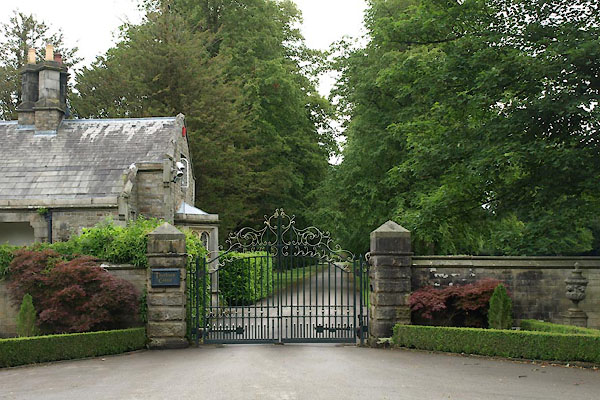
BUU73.jpg (taken 26.6.2011)
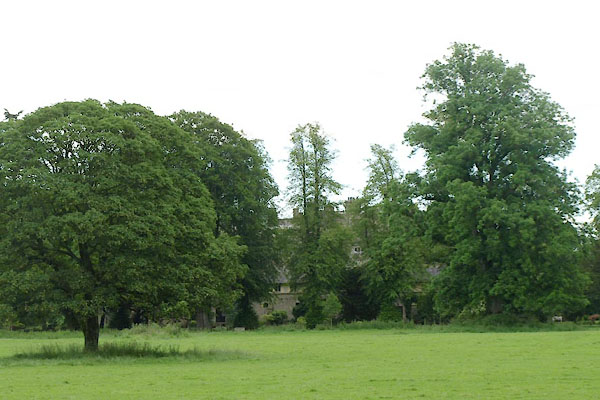
BUU74.jpg (taken 26.6.2011)
placename:- Thurland Castle
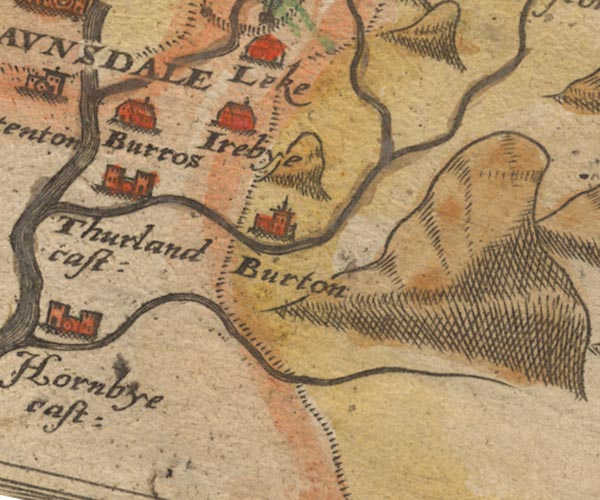
Sax9SD67.jpg
Building with two towers, symbol for a castle. "Thurland cast:"
item:- private collection : 2
Image © see bottom of page
placename:- Thurlande Castell
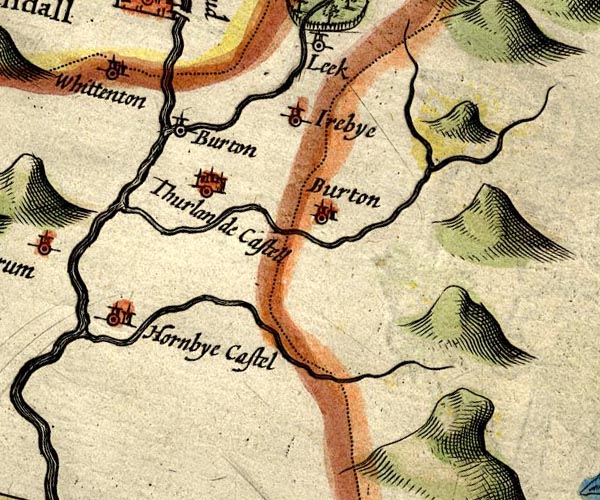
SP14SD67.jpg
"Thurlande Castell"
circle, towers
item:- Armitt Library : 2008.14.5
Image © see bottom of page
placename:- Thurland Castle
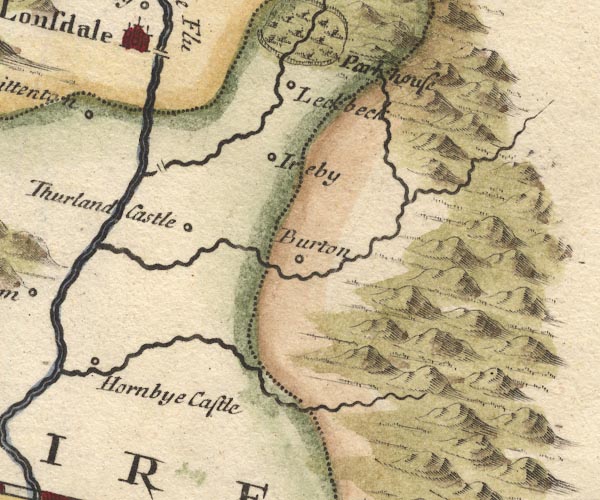
MD10SD67.jpg
"Thurland Castle"
Circle.
item:- JandMN : 24
Image © see bottom of page
placename:- Thurland Castle
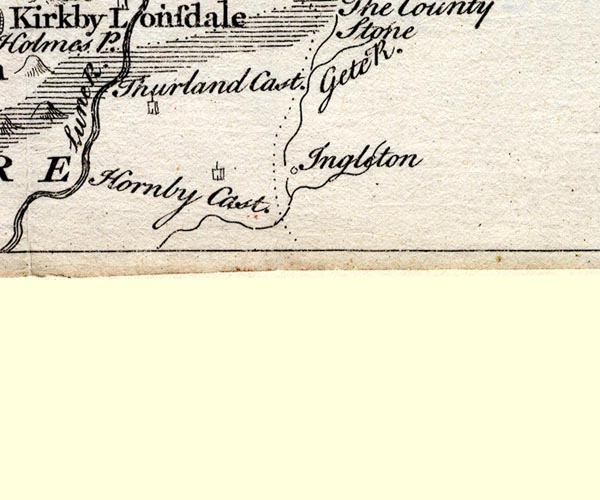
SMP2SDT.jpg
"Thurland Cast."
Building.
item:- Dove Cottage : 2007.38.59
Image © see bottom of page
placename:- Thurland Castle
 goto source
goto sourcePage 131:- "... the river Lone passes by Thurland, a castle of the Tunstalls, built by Thomas Tunstall, knight of the garter, t. Henry IV. when the king had given him leave "to fortify and kernell, i.e. embattle his house:""
placename:- Thurland Castle
 goto source
goto sourcePage 176:- "..."
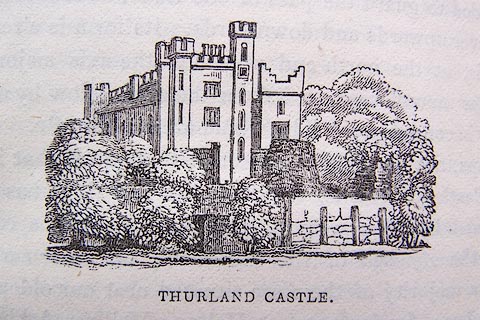 click to enlarge
click to enlargeO80E31.jpg
"THURLAND CASTLE."
item:- Armitt Library : A1180
Image © see bottom of page "Crossing the Greta, we approach THURLAND CASTLE, in a spacious park. It was built in the reign of Henry IV. and left in ruins by the ravages of the wars of Charles I. It was however, about 30 years ago, judiciously restored; in the process of which the demolition of the hoary gateway is to be lamented. It contains many fine paintings by the ancient masters. Brian Tunstall, 'the stainless,' 'that bold squire,' who fell on Flodden Field, held Thurland Castle and the lordship; and is said to lie buried in Tunstall Church; but Whittaker doubts the latter fact, and assigns the recumbent statue which now lies near the altar rails, and which tradition points out as his effigy, 'with (he says) little diffidence' to Sir Thomas Tunstall, the founder of the Castle."
"The Moat remains unto this day - not, indeed, as a defence against external foes - but as a habitat for the"
 goto source
goto sourcePage 177:- "White Water Lily, Nymphaea alba, the Yellow Water Lily, Nuphar lutea, and other aquatic plants."
